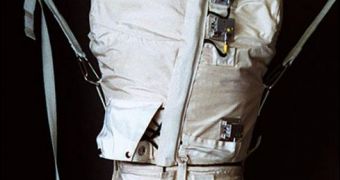Astronauts aboard the International Space Station (ISS) say that they can apparently perceive cosmic rays. The radiation appears as dots, streaks or clouds on their retinas, even when their eyes are closed.
The phenomenon is caused by the fact that the orbital outpost provides only limited protection against this energetic radiation. Therefore, the rays pass through the ISS shields, and straight through astronauts' retinas, and then move on.
When they hit photosensitive cells at the back of the human eye, they trigger electrical signals through visual neurons, which are perceived by the brain as small light flashes. Astronauts who've spent a lot of time in space call them luminous dancing fairies.
The experience of seeing light flashes in space is not new. Astronauts with the Apollo 11, 12, and 13 missions described them in detail. This prompted NASA to install a series of specific experiments during subsequent missions to the Moon.
Some of the experiments included blindfolding crewmembers, and then asking them to describe what they saw. Later on, the Apollo Light Flash Moving Emulsion Detector (ALFMED) was also installed on all outbound space capsules.
Cosmic rays are high-energy charged subatomic particles, whose origin is still a subject of much debate in the international astronomical community. Most of them are absorbed by the planetary atmosphere, which helps explain why they are not visible on the surface.
“In space I see things that are not there. Flashes in my eyes, like luminous dancing fairies, give a subtle display of light that is easy to overlook when I’m consumed by normal tasks,” NASA astronaut and Expedition 30 crewmember, Don Pettit, explains.
“But in the dark confines of my sleep station, with the droopy eyelids of pending sleep, I see the flashing fairies. As I drift off, I wonder how many can dance on the head of an orbital pin.” he adds.
“When a cosmic ray happens to pass through the retina it causes the rods and cones to fire, and you perceive a flash of light that is really not there. The triggered cells are localized around the spot where the cosmic ray passes, so the flash has some structure,” Pettit says of the biological underpinnings of dancing fairies.
The ISS crew has access to a series of experiments aboard the station, which tell them precisely how much radiation they are exposed to. These include the Phantom Torso, which reveals the distribution of cosmic rays in the body, and the Alpha Magnetic Spectrometer (AMS).
The latter is a particle physics instrument installed on the outside of the ISS, whose main mission is to detect and analyze cosmic rays, Astrobiology Magazine reports.

 14 DAY TRIAL //
14 DAY TRIAL //